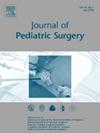Surgical Management of Pediatric Dog Bites: A Systematic Review and Treatment Guideline
IF 2.4
2区 医学
Q1 PEDIATRICS
引用次数: 0
Abstract
Introduction
Dog bites are a unique and unusual injury in children, associated with atypical bacterial species, high infection rates, and controversial surgical treatment. Expert recommendations currently guide management and no surgical evidence-based guidelines exist. We conducted a systematic review to answer three management questions: (1) What are the best practices for wound management? (2) In what circumstances should prophylactic antibiotics be administered? (3) In what circumstances should rabies prophylaxis be given?
Methods
A structured review was performed using a keyword search querying “pediatric” “dog bite” “management”. Results were reported according to the PRISMA methodology. The quality of nonrandomized studies was evaluated according to Methodological Index for Non-Randomized Studies (MINORS). Qualitative analysis was performed.
Results
A total of 803 studies were identified and 53 studies were included in the final analysis. Current literature suggests that primary closure of bites which are well irrigated and sharply debrided within 8 h of injury, is not associated with increased infection. While dog bites are associated with an overall high rate of infection (6–25 %), routine antibiotic prophylaxis in low-risk wounds does not lower that risk. Postexposure prophylaxis for rabies is indicated for all dog bites where the rabies status of the dog cannot be determined, or the animal cannot be quarantined for 10 days.
Conclusion
High-quality evidence regarding the surgical management of pediatric dog bites is limited. Trial data have demonstrated improved outcomes in wound healing and infection rates with a focus on copious irrigation and diligent wound debridement, although independent validation is needed.
Level of Evidence
Level II – systematic review.
小儿被狗咬伤的外科治疗:系统回顾与治疗指南》。
导言:被狗咬伤是儿童中一种独特而不寻常的伤害,与非典型细菌种类、高感染率和有争议的手术治疗有关。目前,专家建议指导处理方法,但没有基于证据的手术指南。我们进行了一项系统性回顾,以回答三个管理问题:(1)伤口管理的最佳实践是什么?(2)在什么情况下应使用预防性抗生素?(3) 在什么情况下应进行狂犬病预防?使用关键词 "儿科""狗咬伤""处理 "进行搜索,进行结构化综述。结果按照 PRISMA 方法进行报告。非随机研究的质量根据非随机研究方法指数(MINORS)进行评估。还进行了定性分析:结果:共确定了 803 项研究,53 项研究被纳入最终分析。目前的文献表明,在受伤后 8 小时内对咬伤进行充分冲洗和锐利清创的初次闭合手术与感染增加无关。虽然狗咬伤的总体感染率较高(6%-25%),但对低风险伤口进行常规抗生素预防并不会降低感染风险。在无法确定狗的狂犬病状态或动物无法隔离 10 天的情况下,所有被狗咬伤的患者都应进行狂犬病暴露后预防:结论:有关小儿被狗咬伤的手术治疗的高质量证据非常有限。试验数据显示,通过大量冲洗和勤奋清创,伤口愈合和感染率均有所改善,但仍需进行独立验证:证据等级:II 级--系统综述。
本文章由计算机程序翻译,如有差异,请以英文原文为准。
求助全文
约1分钟内获得全文
求助全文
来源期刊
CiteScore
1.10
自引率
12.50%
发文量
569
审稿时长
38 days
期刊介绍:
The journal presents original contributions as well as a complete international abstracts section and other special departments to provide the most current source of information and references in pediatric surgery. The journal is based on the need to improve the surgical care of infants and children, not only through advances in physiology, pathology and surgical techniques, but also by attention to the unique emotional and physical needs of the young patient.

 求助内容:
求助内容: 应助结果提醒方式:
应助结果提醒方式:


